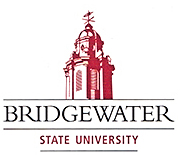
Images from the Anti-Apartheid Movement
From the collection of Stephen Lewis
Maxwell Library
June 6 - October 1, 2019
Historically, posters were used by leaders or movements to educate and win support of people who were perhaps illiterate. Some of these posters represent powerful expressions by various poster artists. Others represent the viewpoint of states and political groups motivated by ideology. In a number of countries, posters are used regularly and extensively to convey ideas as well as to generate support for candidates for election. Posters are also an inexpensive way for a group to communicate a simple message. Frequently, posters are created for use for a very brief period and then are discarded and lost forever. It is unfortunate that many posters have suffered that fate. Posters can create a historical reference for a people, a movement or a society. Posters can be a very beautiful form of propaganda. As commercial advertising calls for more consumption, a political poster calls for more action.
Loosely translated, Apartheid means being apart. The system of Apartheid was developed by the Afrikaners, white Dutch settlers in South Africa. It became official policy in 1948 and divided South African people into 4 groups; native, white, Asian, and colored. The native being black South Africans. This system was also established in South West Africa, now known as Namibia. Non-white political representation was totally abolished in 1970. The government took away the citizenship of black people.
Resistance to this racist system began with different groups. The largest and most effective of these groups was the African National Congress, ANC, which became a political party. Two of the top leaders of the ANC were Nelson Mandela and Oliver Tambo. The ANC was a multiracial organization that welcomed anyone who was opposed to Apartheid. It’s military wing, Umkhonto We Sizwe was led by Joe Slovo, a white South African. Another important group was the Black Consciousness Movement. Steve Biko is perhaps the most remembered leader in this movement.
As internal resistance grew against Apartheid, solidarity movements developed in many countries. These movements created boycotts of South African goods, boycotts of anything to do with South Africa, hosted speaking events for leaders of the resistance movement, and pressured their own governments to take measures to pressure the South African government to abolish Apartheid. After a few years of negotiations, free democratic elections were held and were won by the ANC under the leadership of Nelson Mandela.
We should not forget the leaders of the resistance. They include Nelson Mandela who was imprisoned on Robben Island for 27 years and finally released in 1990, by the government so they could negotiate an end to Apartheid. He was elected President in the first free elections. Steve Biko who helped organize urban blacks and who was beaten to death in police custody. Oliver Tambo served at various times as President and General Secretary of the ANC. He was sent abroad to England by the ANC to build international support for the movement. Dennis Brutus was a teacher, journalist and poet. He helped successfully organize the prevention of South Africa in participating in the Olympics. He was shot in the back by police and served time with Mandela on Robben Island. Donald Woods was a white newspaper editor who befriended Steve Biko. He was banned by the government for his anti-Apartheid activities and his daughter was severely burned by an acid laced T shirt. He fled South Africa and worked for the movement from abroad. Ruth First was a member of the Communist Party and married to Joe Slovo. She was tried for treason, imprisoned and banned for her work against Apartheid. She eventually went into exile and was assassinated in Mozambique by a bomb blast. Walter Sisulu was another leader of the ANC. He was imprisoned for 26 years. Joe Slovo, mentioned above, was the head of the SA Communist Party for a time. He was a top theoretician in the Communist Party and the ANC. Chris Hani was also a leader in the CP and the ANC. He was assassinated in 1993.
The posters are from a collection of more than 8600 of Stephen Lewis. He is a long-time activist in the labor movement, and the former Treasurer of his union. Stephen has exhibited at a number of public libraries in Massachusetts and two of the state Heritage parks. He has presented at the annual conference of the National Council on Public History, and on some cable television programs. He can be reached by email at lewisposters@gmail.com or at Facebook under labor/progressive political posters.


